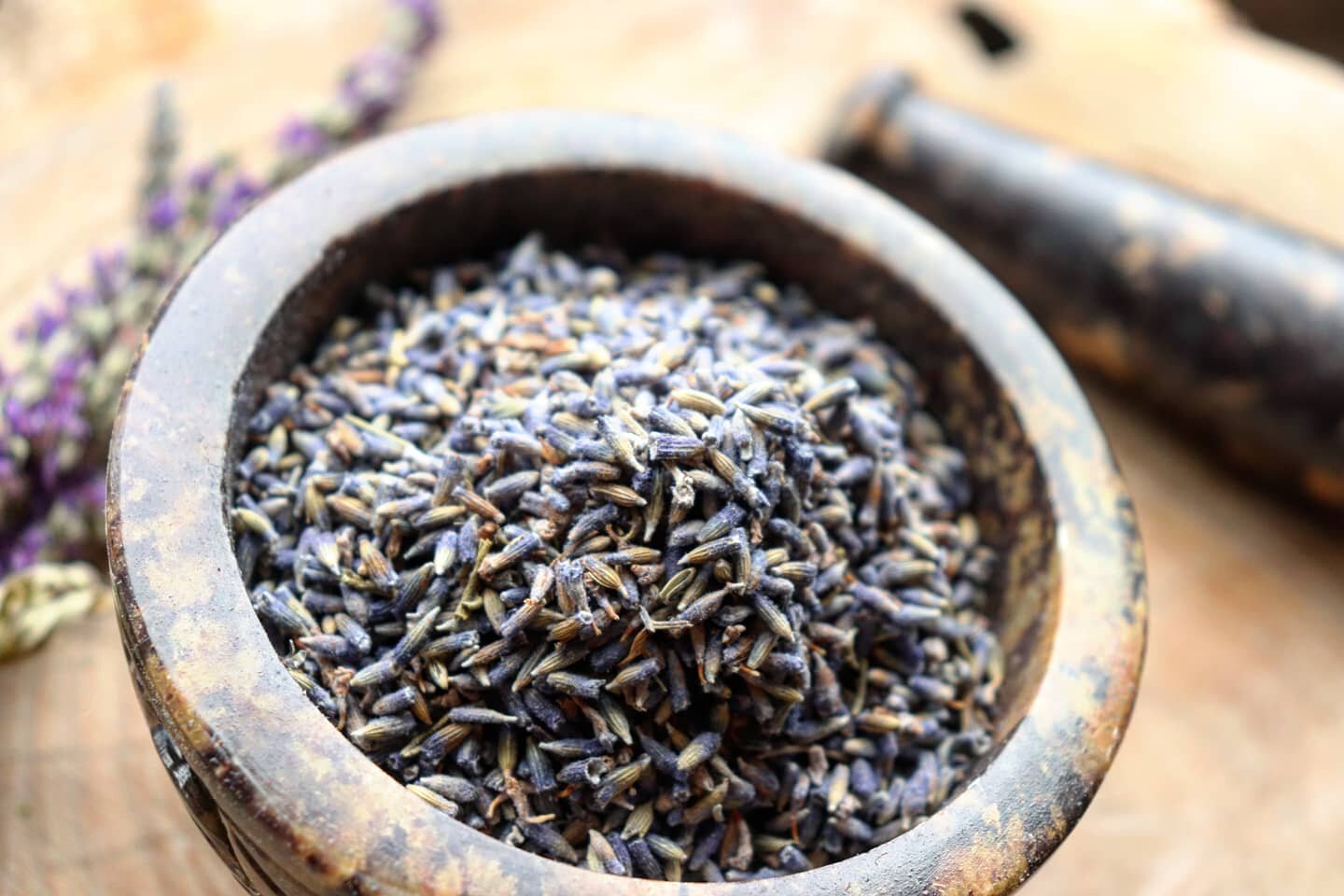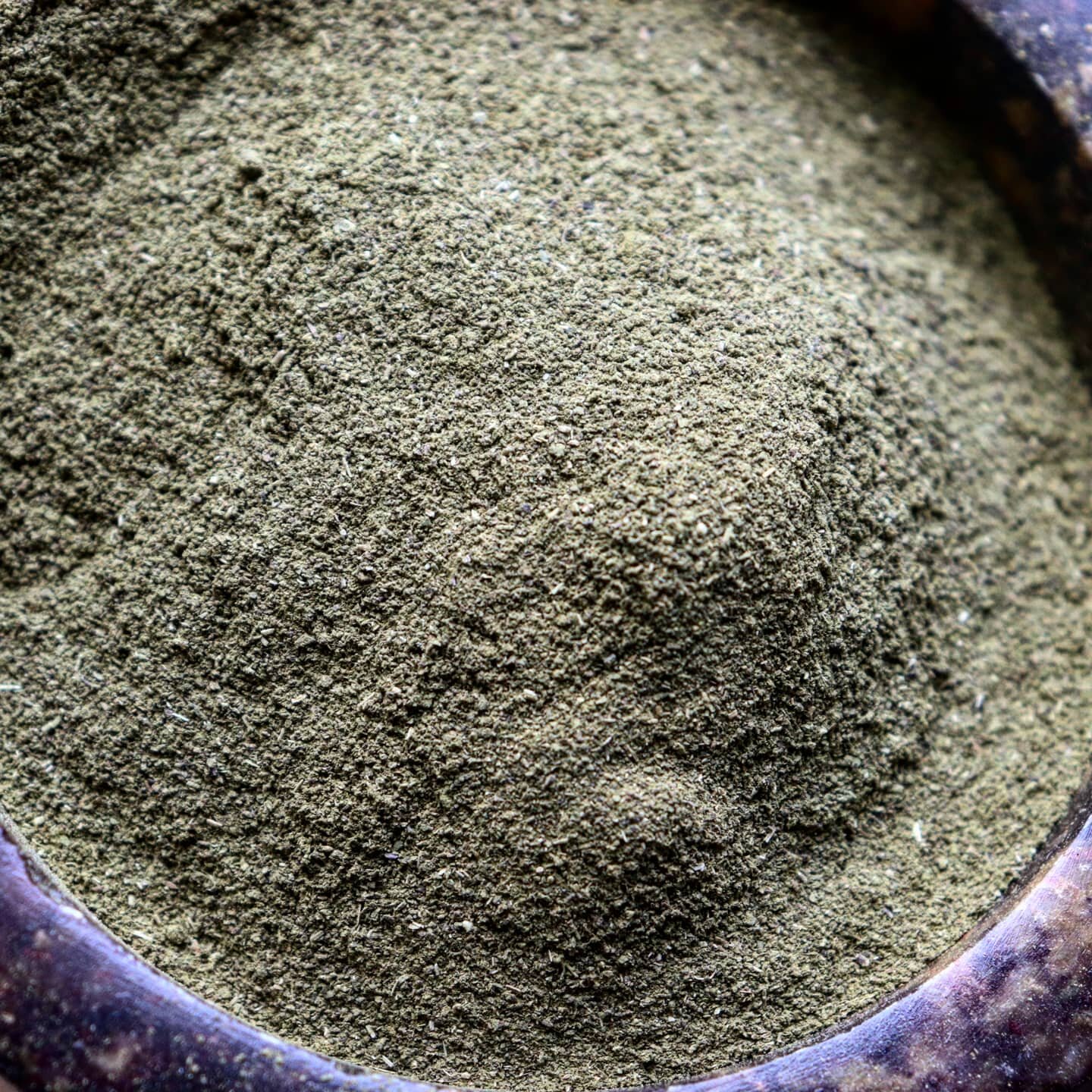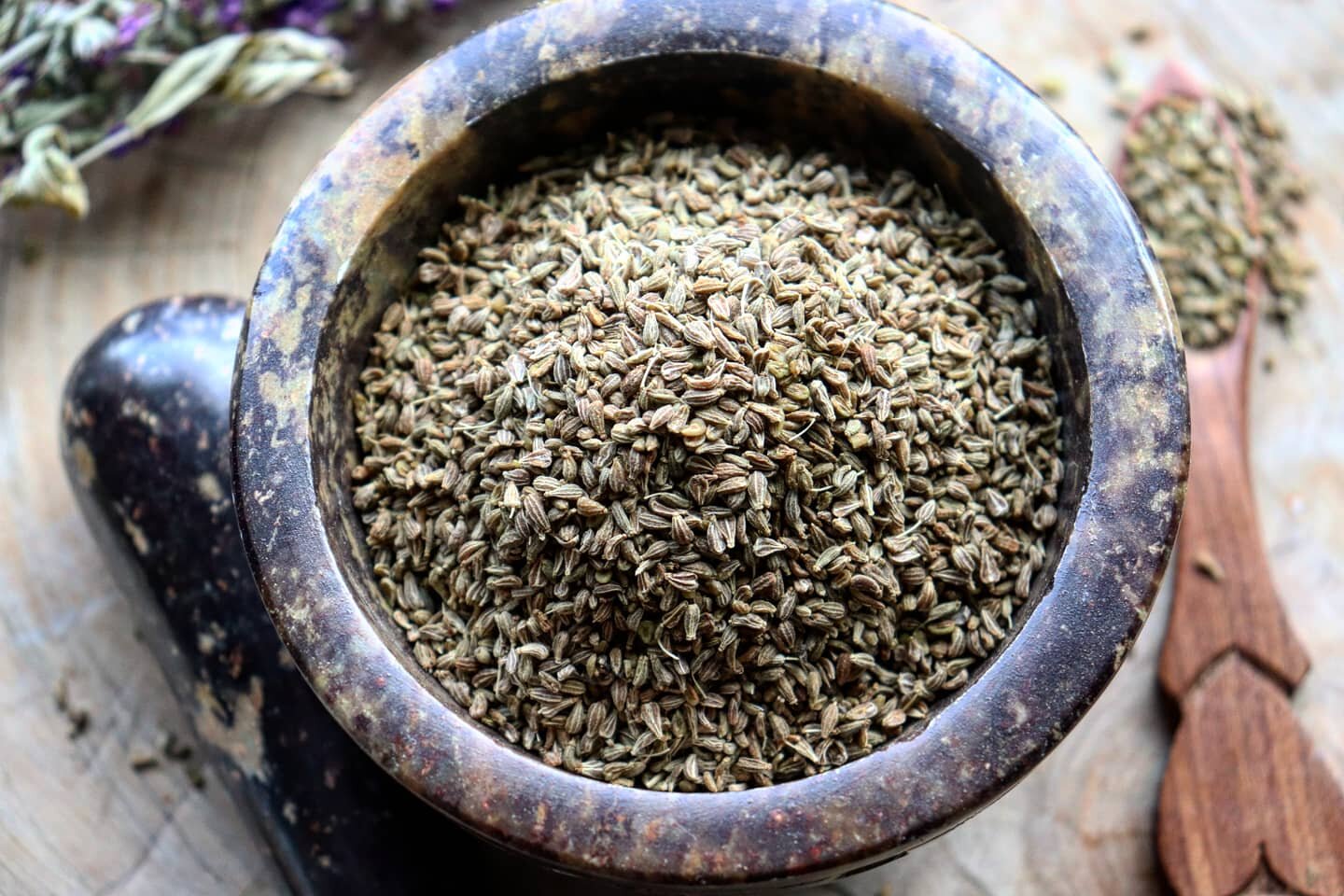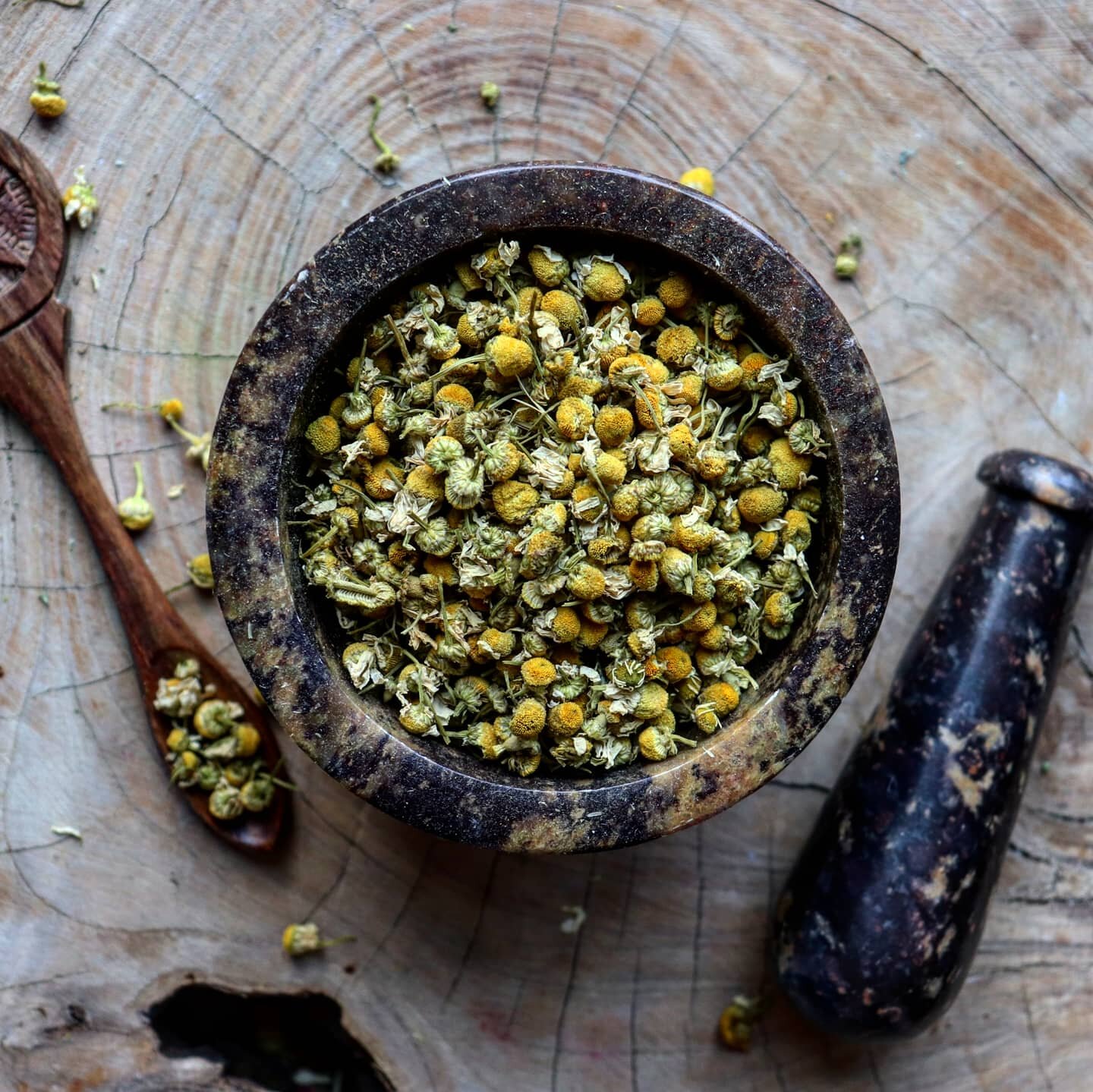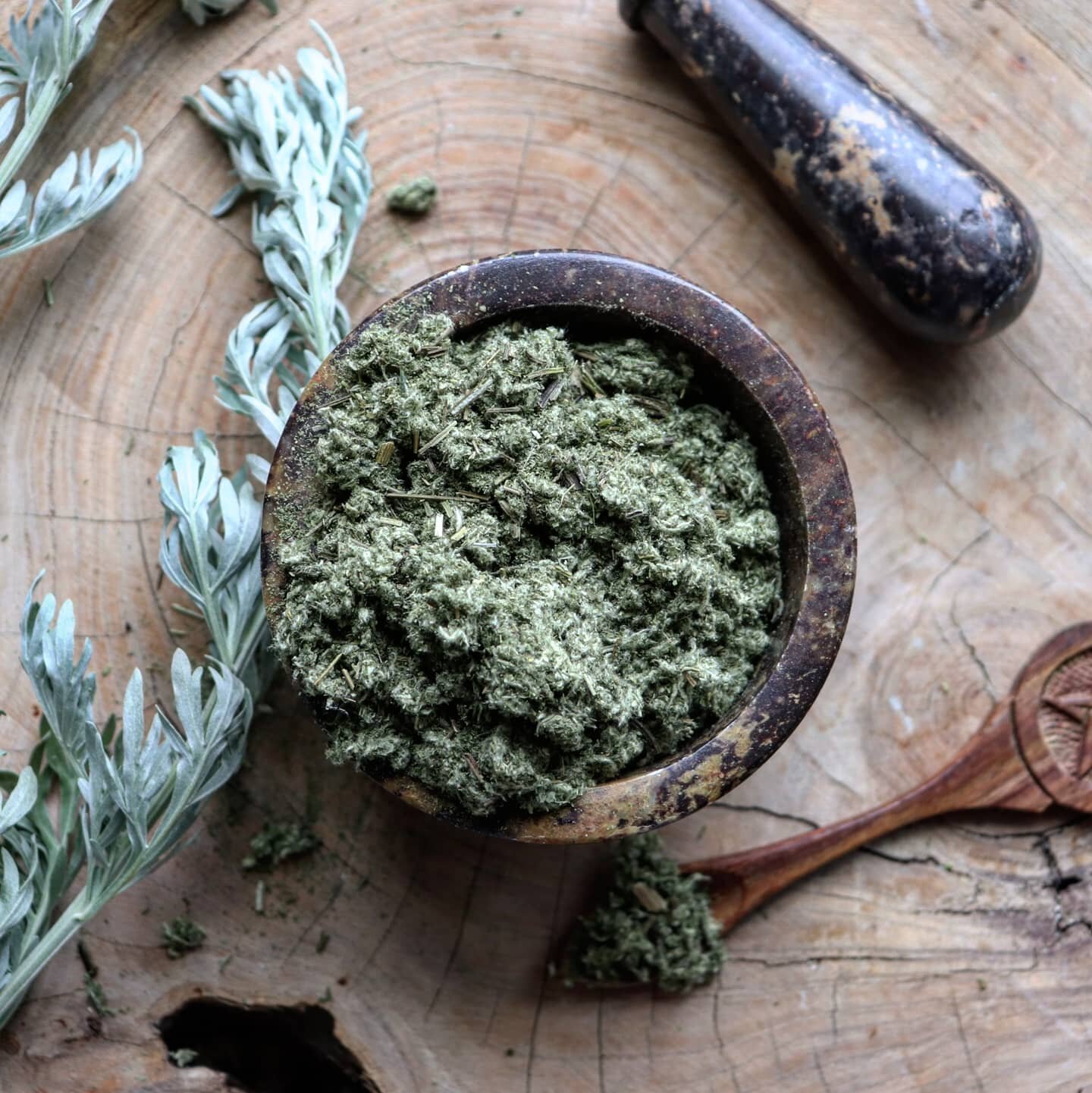 Image 1 of 2
Image 1 of 2

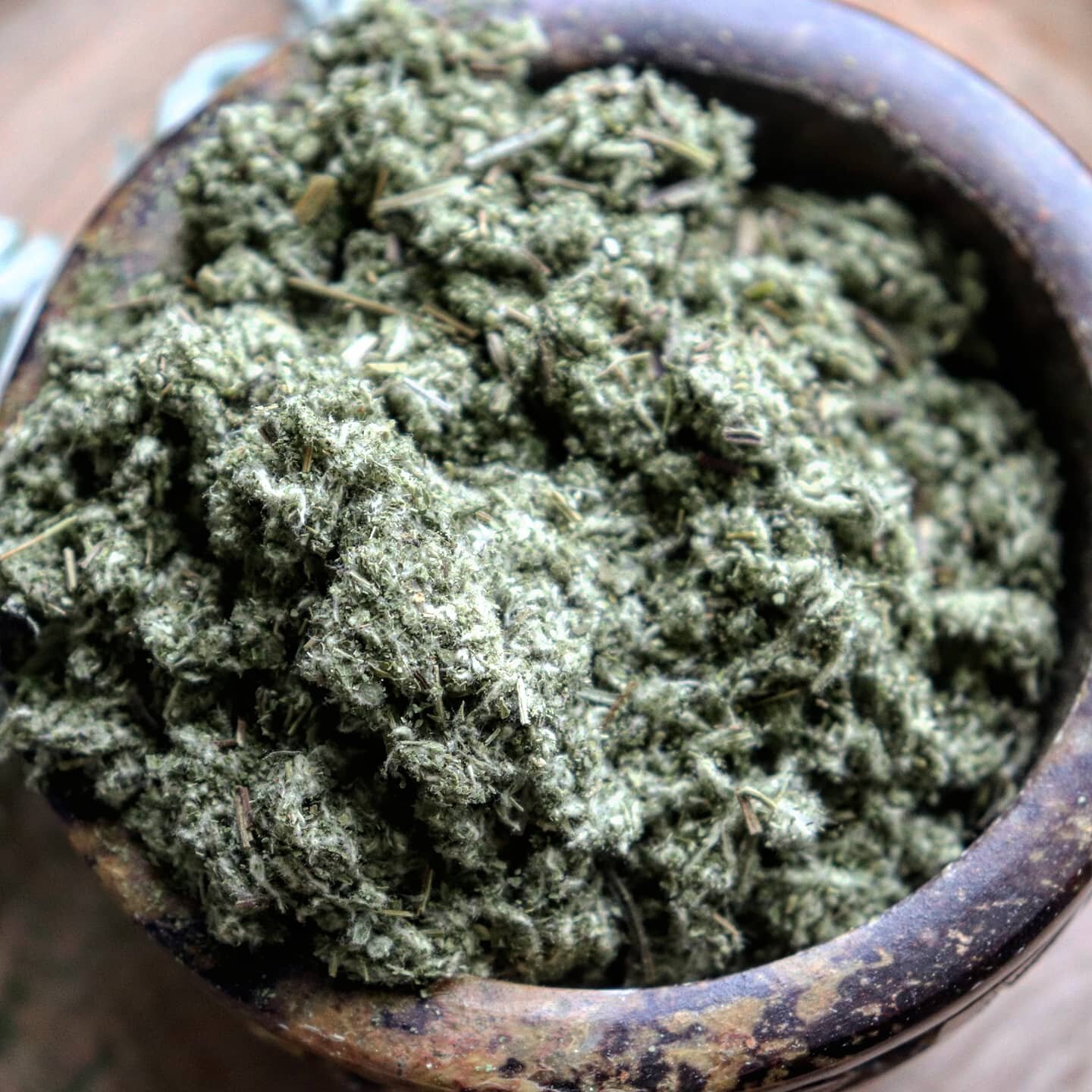 Image 2 of 2
Image 2 of 2



Mugwort
Artemisia vulgaris aka common mugwort
Cut and Sifted—available in 1 ounce or 1/2 ounce and packaged in a plastic pouch.
For millennia, mugwort has been a source for flavoring beverages and food and has also been used for its beneficial properties. There is much traditional folklore surrounding the plant and it has been reported to encourage dreaming. Artemisia vulgaris is an aromatic plant that grows along creek banks and waysides. This member of the Asteraceae family is known for the silvery shine underneath its leaves. Mugwort herb is commonly brewed into mugwort tea and can also be used as incense, incorporated into dream pillows, and infused into botanical vinegars.
Fresh, crushed mugwort leaves applied to the skin relieves burning, itching and pain and, with continued application, can help get rid of warts.
Mugwort has also been used in Europe to induce abortions. It helps strengthen contractions and it is used in a compress to promote labor and help expel the afterbirth. It is also used to help regulate the menstrual cycle and ease painful menstruation and the onset of menopause. Use in combination with ginger in a tea to soothe difficult menstruation.
Infusion – 1 ounce dried herb to 1 pint boiling water. 5-10 minutes. Do not make steep for too long or it will become intolerably bitter.
Tincture- Cover four ounces of fresh herb with 1 pint 100 proof alcohol, vodka, gin or brandy. Cover and keep in a dark place, shaking several times per day for two weeks.
History + Folklore
Mugwort is a common plant in the British Isles; its angular, purple stalks growing more than three feet in height. It bears dark green leaves with cottony down undersides. Mugwort is said to have derived its name from having been used to flavor beer before the wide use of hops. The botanical name is derived from Artemis, the Greek goddess of the hunt, fertility, and the forests and hills. Roman soldiers were known to put mugwort in their sandals to keep their feet from getting tired. Native Americans equate mugwort with witchcraft. They believed that the rubbing of the leaves on the body are said to keep ghosts away, and a necklace of mugwort leaves is said to help protect against dreaming about the dead. It has been believed that John the Baptist wore a girdle of mugwort in the wilderness for protection. Other magical attributes include protection for road weary travelers, and general protection against the evils of the spirit realms.
Magickal
Strength, Psychic Powers, Divination, Protection, Prophetic Dreams, Healing, Astral Projection
Feminine, Venus, Earth
Deities: Artemis, Diana
Mugwort can be used as a sacred smoking herb or burned as a fumigant for protection or divination. It is safe to smoke (as safe as smoking anything is) by itself, mixed with tobacco, or other smokeables in a ritual context and is said to enhance astral projection, lucid dreaming and other altered states of consciousness. Some say that simply keeping mugwort under your pillow or in your bedroom will encourage prophetic dreams. Try making a dream pillow stuffed with mugwort. If you do keep it in your bedroom, remember that it is closely related to ragweed and the flowers may trigger some allergies.
Others say you must burn it or smoke it in order to utilize its conscious-altering effects. Burn mugwort in an incense burner as you use divination tools to help open your mind to any messages coming in.
A garland or girdle of mugwort can be worn while dancing around the midsummer balefire and thrown into the fire at the end of the night to ensure protection throughout the year.
Warnings: See Below
Mugwort is considered a noxious weed in some of the United States. Check with your State’s laws before planting as some carry heavy fines for planting certain plants.
Mugwort should never be used internally during pregnancy or lactation or by anyone who has pelvic inflammatory issues as it can cause uterine contractions and can be passed through the mother’s milk.
Mugwort should not be used for more than one week continuously. Continued, habitual use of mugwort can cause nervous problems, liver damage, and convulsions.
Mugwort flower pollen can trigger hay fever attacks in sensitive people. Some people have topical allergies to mugwort. Test some on your skin before using.
Artemisia vulgaris aka common mugwort
Cut and Sifted—available in 1 ounce or 1/2 ounce and packaged in a plastic pouch.
For millennia, mugwort has been a source for flavoring beverages and food and has also been used for its beneficial properties. There is much traditional folklore surrounding the plant and it has been reported to encourage dreaming. Artemisia vulgaris is an aromatic plant that grows along creek banks and waysides. This member of the Asteraceae family is known for the silvery shine underneath its leaves. Mugwort herb is commonly brewed into mugwort tea and can also be used as incense, incorporated into dream pillows, and infused into botanical vinegars.
Fresh, crushed mugwort leaves applied to the skin relieves burning, itching and pain and, with continued application, can help get rid of warts.
Mugwort has also been used in Europe to induce abortions. It helps strengthen contractions and it is used in a compress to promote labor and help expel the afterbirth. It is also used to help regulate the menstrual cycle and ease painful menstruation and the onset of menopause. Use in combination with ginger in a tea to soothe difficult menstruation.
Infusion – 1 ounce dried herb to 1 pint boiling water. 5-10 minutes. Do not make steep for too long or it will become intolerably bitter.
Tincture- Cover four ounces of fresh herb with 1 pint 100 proof alcohol, vodka, gin or brandy. Cover and keep in a dark place, shaking several times per day for two weeks.
History + Folklore
Mugwort is a common plant in the British Isles; its angular, purple stalks growing more than three feet in height. It bears dark green leaves with cottony down undersides. Mugwort is said to have derived its name from having been used to flavor beer before the wide use of hops. The botanical name is derived from Artemis, the Greek goddess of the hunt, fertility, and the forests and hills. Roman soldiers were known to put mugwort in their sandals to keep their feet from getting tired. Native Americans equate mugwort with witchcraft. They believed that the rubbing of the leaves on the body are said to keep ghosts away, and a necklace of mugwort leaves is said to help protect against dreaming about the dead. It has been believed that John the Baptist wore a girdle of mugwort in the wilderness for protection. Other magical attributes include protection for road weary travelers, and general protection against the evils of the spirit realms.
Magickal
Strength, Psychic Powers, Divination, Protection, Prophetic Dreams, Healing, Astral Projection
Feminine, Venus, Earth
Deities: Artemis, Diana
Mugwort can be used as a sacred smoking herb or burned as a fumigant for protection or divination. It is safe to smoke (as safe as smoking anything is) by itself, mixed with tobacco, or other smokeables in a ritual context and is said to enhance astral projection, lucid dreaming and other altered states of consciousness. Some say that simply keeping mugwort under your pillow or in your bedroom will encourage prophetic dreams. Try making a dream pillow stuffed with mugwort. If you do keep it in your bedroom, remember that it is closely related to ragweed and the flowers may trigger some allergies.
Others say you must burn it or smoke it in order to utilize its conscious-altering effects. Burn mugwort in an incense burner as you use divination tools to help open your mind to any messages coming in.
A garland or girdle of mugwort can be worn while dancing around the midsummer balefire and thrown into the fire at the end of the night to ensure protection throughout the year.
Warnings: See Below
Mugwort is considered a noxious weed in some of the United States. Check with your State’s laws before planting as some carry heavy fines for planting certain plants.
Mugwort should never be used internally during pregnancy or lactation or by anyone who has pelvic inflammatory issues as it can cause uterine contractions and can be passed through the mother’s milk.
Mugwort should not be used for more than one week continuously. Continued, habitual use of mugwort can cause nervous problems, liver damage, and convulsions.
Mugwort flower pollen can trigger hay fever attacks in sensitive people. Some people have topical allergies to mugwort. Test some on your skin before using.
Artemisia vulgaris aka common mugwort
Cut and Sifted—available in 1 ounce or 1/2 ounce and packaged in a plastic pouch.
For millennia, mugwort has been a source for flavoring beverages and food and has also been used for its beneficial properties. There is much traditional folklore surrounding the plant and it has been reported to encourage dreaming. Artemisia vulgaris is an aromatic plant that grows along creek banks and waysides. This member of the Asteraceae family is known for the silvery shine underneath its leaves. Mugwort herb is commonly brewed into mugwort tea and can also be used as incense, incorporated into dream pillows, and infused into botanical vinegars.
Fresh, crushed mugwort leaves applied to the skin relieves burning, itching and pain and, with continued application, can help get rid of warts.
Mugwort has also been used in Europe to induce abortions. It helps strengthen contractions and it is used in a compress to promote labor and help expel the afterbirth. It is also used to help regulate the menstrual cycle and ease painful menstruation and the onset of menopause. Use in combination with ginger in a tea to soothe difficult menstruation.
Infusion – 1 ounce dried herb to 1 pint boiling water. 5-10 minutes. Do not make steep for too long or it will become intolerably bitter.
Tincture- Cover four ounces of fresh herb with 1 pint 100 proof alcohol, vodka, gin or brandy. Cover and keep in a dark place, shaking several times per day for two weeks.
History + Folklore
Mugwort is a common plant in the British Isles; its angular, purple stalks growing more than three feet in height. It bears dark green leaves with cottony down undersides. Mugwort is said to have derived its name from having been used to flavor beer before the wide use of hops. The botanical name is derived from Artemis, the Greek goddess of the hunt, fertility, and the forests and hills. Roman soldiers were known to put mugwort in their sandals to keep their feet from getting tired. Native Americans equate mugwort with witchcraft. They believed that the rubbing of the leaves on the body are said to keep ghosts away, and a necklace of mugwort leaves is said to help protect against dreaming about the dead. It has been believed that John the Baptist wore a girdle of mugwort in the wilderness for protection. Other magical attributes include protection for road weary travelers, and general protection against the evils of the spirit realms.
Magickal
Strength, Psychic Powers, Divination, Protection, Prophetic Dreams, Healing, Astral Projection
Feminine, Venus, Earth
Deities: Artemis, Diana
Mugwort can be used as a sacred smoking herb or burned as a fumigant for protection or divination. It is safe to smoke (as safe as smoking anything is) by itself, mixed with tobacco, or other smokeables in a ritual context and is said to enhance astral projection, lucid dreaming and other altered states of consciousness. Some say that simply keeping mugwort under your pillow or in your bedroom will encourage prophetic dreams. Try making a dream pillow stuffed with mugwort. If you do keep it in your bedroom, remember that it is closely related to ragweed and the flowers may trigger some allergies.
Others say you must burn it or smoke it in order to utilize its conscious-altering effects. Burn mugwort in an incense burner as you use divination tools to help open your mind to any messages coming in.
A garland or girdle of mugwort can be worn while dancing around the midsummer balefire and thrown into the fire at the end of the night to ensure protection throughout the year.
Warnings: See Below
Mugwort is considered a noxious weed in some of the United States. Check with your State’s laws before planting as some carry heavy fines for planting certain plants.
Mugwort should never be used internally during pregnancy or lactation or by anyone who has pelvic inflammatory issues as it can cause uterine contractions and can be passed through the mother’s milk.
Mugwort should not be used for more than one week continuously. Continued, habitual use of mugwort can cause nervous problems, liver damage, and convulsions.
Mugwort flower pollen can trigger hay fever attacks in sensitive people. Some people have topical allergies to mugwort. Test some on your skin before using.
For the list of herbal correspondents, click on the herb. 🌿
Our products are not intended to diagnose, treat, cure, or prevent any disease. These items are purely informational and curios. Humans are complex; therefore, results may vary depending on consumption and individual physiology. ShadowCraft and affiliates are not responsible for consequences as a result of the misuse and misrepresentation of our products.
Please be advised that you are on a site that promotes the use of and sells homeopathic & herbal supplement products that have not been evaluated by the FDA. All products sold are intended for spiritual and entertainment purposes and have no guaranteed outcome or results. The buyer assumes all responsibility for items once purchased.
As with all handmade items, the listing image may vary compared to the product received. Please refer to our shop disclaimer for additional warnings and information.


